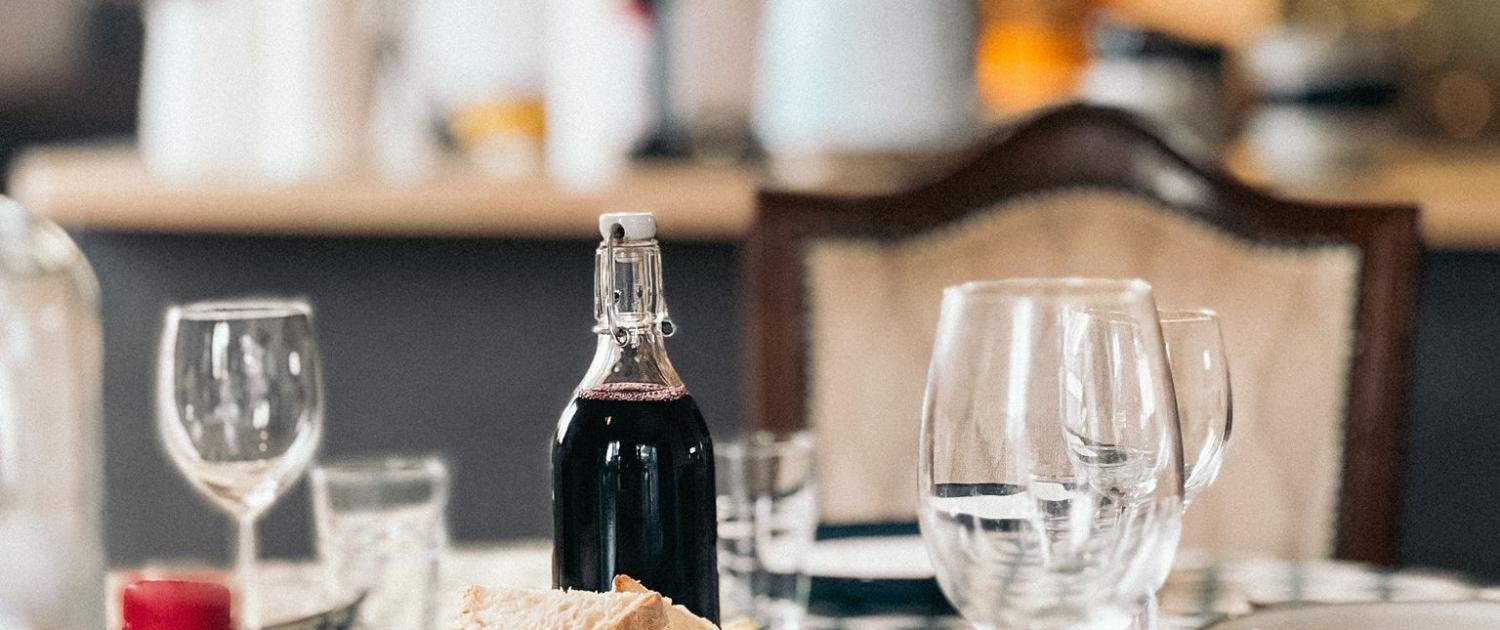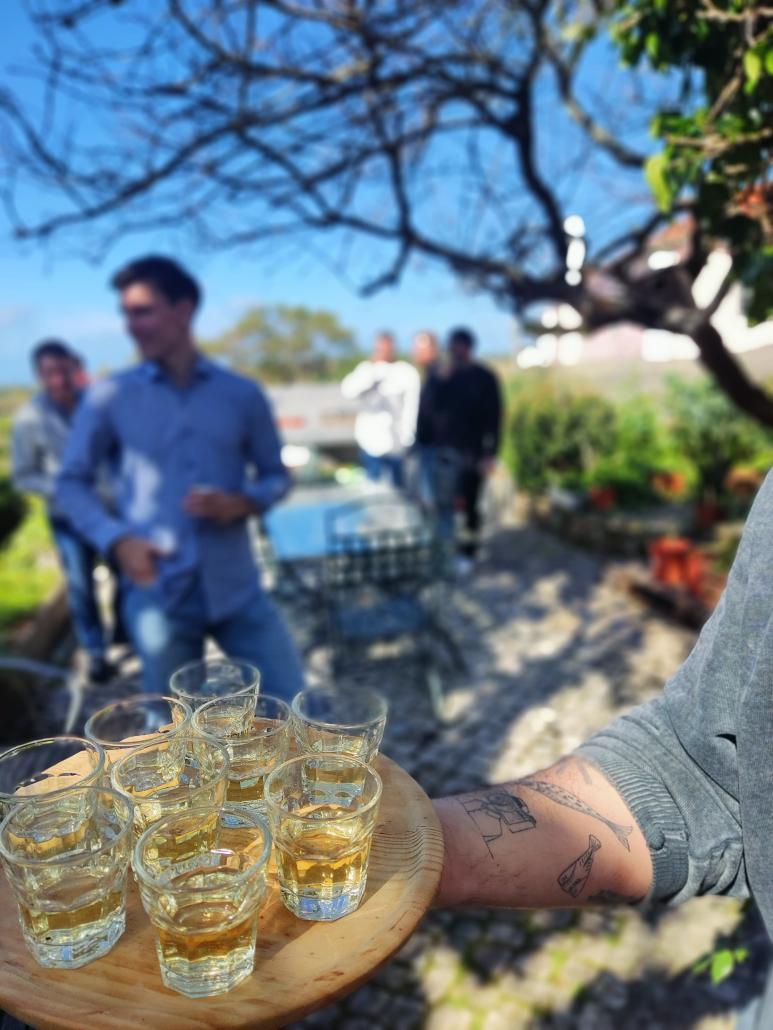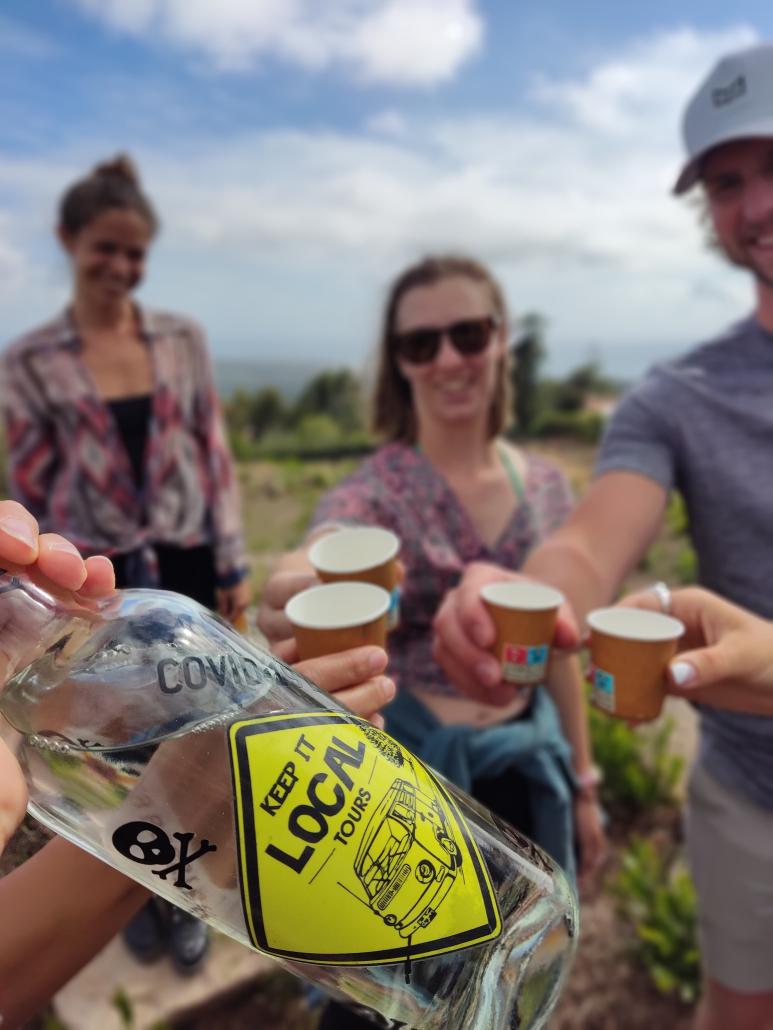Portuguese Drinks: A Local Guide to What You Need to Try
If you’re planning to dive into Portuguese culture, one of the best paths is through its drinks.
Let’s talk portuguese drinks, the real-deal stuff locals actually order, sip, toast with, and argue about at tiny counters and sunny terraces. This is your friendly cheat sheet to portuguese drinks, built for curious travelers who want to taste the country, not just tick boxes. I’ll keep it simple and local, with plenty of easy wins, zero snobbery, and a bunch of insider tips so you can drink like you live here.
First, the vibe. In Portugal, drinks are about time, place, and people. You sip a cold “imperial” by the river after a lazy lunch. You clink tiny chocolate cups of ginjinha in a backstreet before dinner.
You share carafes of house wine at a neighborhood tasca where the handwritten menu changes daily. And if you want a day that mixes tasting food & wine, with hidden spots and small producers, you can always fold that into our relaxed Guided Tour Arrábida. But I’m getting ahead of myself. Let’s pour.
Wines you should not skip
Portuguese Wine Regions
Douro and Porto wine country
The Douro is the dramatic river valley where Port grapes grow on schist terraces that look like they were carved by patient giants. It is the oldest demarcated wine region in the world. If you only remember one thing about Port, remember this: it’s wine whose fermentation is stopped with grape spirit so natural sugars remain, which makes it sweet, powerful and perfect with cheeses or dessert.
Vinho Verde
It’s fresh, it’s light, it’s a fizzy drink, and it loves seafood. Vinho Verde literally means green wine, but think young, vibrant, slightly spritzy whites that make grilled sardines, octopus salad, and clams sing. If you see Alvarinho or Loureiro on the label, bingo. Order a cold bottle for lunch, and do not overthink it.
Bairrada bubbly
Portugal makes serious sparkling wine, especially in Bairrada. Locals call it Espumante, and it is perfect for toasts, picnics, or pairing with salty snacks like tremoços. If your plan is a day of easy city wandering, you can weave tastings into a relaxed Lisbon Day Tour.
Douro reds
Think layered, bold, and great with red meat and stews. If you see blends with touriga nacional, touriga franca, or tinta roriz, you’re in good hands. This is what you want with a hearty posta or a slow braise.
Alentejo reds
Round, generous, and super food friendly. These wines bring warm fruit and soft tannins, perfect for pork dishes, migas, or a mixed grill. Many tascas pour Alentejo by the glass, which is your cue to settle in for a long lunch.
Setúbal Peninsula
Just south of Lisbon, this is the most famous Moscatel region. Moscatel de Setúbal is a fortified Muscat with an amber glow, intense aroma and a long history connecting Portugal to trade routes and royal tables. It’s one of the most lovable dessert wines in the country, and the DOC’s identity is tied to pioneers like José Maria da Fonseca.
Pico Island in the Azores
Pico looks like it rose out of the Atlantic just to grow vines. The vineyards are laid out in black lava fields, divided by basalt walls called currais that protect the vines from ocean winds and salt spray. This unique landscape is a UNESCO World Heritage site, and the wines have gained serious international attention in recent years. Expect dry, saline whites from grapes like Verdelho, Arinto from Azores and Terrantez do Pico. The combination of volcanic soil and Atlantic weather makes for the kind of minerality wine lovers chase.
Portuguese sweet things and fortified icons
Port Wine
Not just for dessert. White Port with tonic is a local favorite pre-dinner. Ask for a Porto Tónico and garnish with a lemon peel. Ruby and tawny are classics after a meal, but a chilled 10 year tawny on a warm evening is magic.
Madeira
For lovers of complexity, caramel, and that slow glow. Try dry styles as an aperitif or richer ones with dessert or cheese. History side note that Americans love to hear at tastings: Madeira was famously used to toast the signing of the U.S. Declaration of Independence in 1776, and caches of 18th century Madeira still pop up in American cellars today.
Moscatel de Setúbal
Local secret time. South of Lisbon, Setúbal makes a wonderfully aromatic fortified wine that tastes like sunshine and orange peel. It is fantastic after a seafood feast or with Azeitão cheese. If you want to meet it on its home turf with beaches and small cellars nearby, slot a tasting into an Arrábida Natural Park Tour.
Portuguese Liqueurs
Ginjinha
Ginjinha, or simply ginja, is Lisbon’s beloved sour cherry liqueur. You drink it in a tiny cup, sometimes with the cherry at the bottom, either straight or in a fun chocolate cup. It’s tart-sweet, spicy and very nostalgic. The first shop to sell it in Lisbon stood near São Domingos and the tradition is alive and well, though like anything in the historic center, it evolves with the city.
Licor Beirão
Portugal’s classic herbal liqueur with hints of cinnamon, mint and other botanicals. It’s the after-dinner bottle that shows up everywhere from dinner tables to cafés. You can sip it neat, on ice or even in simple cocktails.
Amarguinha
Called Amarguinha in the Algarve, this “bitter almond” liqueur is actually sweet and great with ice and a lemon slice. If you hear that it once involved almonds with potentially risky compounds, remember modern production makes it safe to enjoy. It tastes like summer by the sea.
Medronho
A traditional moonshine made from the strawberry tree fruit. Respect the pour. Sip slowly after a heavy meal and let it warm your soul, cause this one is for the brave ones!
Poncha
From Madeira, a mix of sugarcane spirit, honey, and citrus. Fun, zesty, and a perfect beach-town sundowner.
Brandy Macieira and CR&F Aguardente Velha
Macieira is the Portuguese brandy classic with roots in the 19th century and ties to the Cognac method. It’s a national favorite and still widely poured. CR&F is the other iconic name locals mention, a venerable aguardente velha aged in oak with a smooth, toffee-tinged profile. Both are fixtures of the after-dinner cart.
Aguardente and Bagaço
Aguardente vínica is grape brandy. Bagaço is more rustic, often confusingly used as a catch-all word for strong homemade distillates. In villages, grandparents will tell you it cures the flu or a toothache.
Traçado, the humble hybrid
Traçado, sometimes called traçadinho, is a very down-to-earth Portuguese habit of mixing drinks in tascas. Versions vary by region. You’ll hear of wine with soda, beer with soda, or even local twists like mixing ginja with aguardente. It’s not fine wine culture, it’s everyday bar culture, cheap and cheerful. If you see an old-timer order one at the counter, that’s a wink from a Portugal that doesn’t care about trends.
Sangria
Sangria in Portugal is summer in a pitcher and the perfect crowd pleaser. The classic version mixes young red wine with sliced orange, lemon and apple, a spoon of sugar, a splash of a light liqueur, a pinch of cinnamon and a top up of lemon soda for lift. You’ll also find white sangria with aromatic whites, sparkling sangria for celebrations and fun riffs with berries, peach or passion fruit.
Beer made simple
Sagres vs Super Bock
Portugal’s two big names. Order what the place pours. The draft size is an imperial in Lisbon and a fino in Porto. If you want a bigger glass, ask for a caneca. Keep it cold, keep it easy, and pair with tremoços, peanuts, or a bifana. Want ideas on where to base yourself so terrace-hopping is effortless at night? Here is a handy local map for picking your neighborhood: Lisbon Neighborhoods Guide: Where to Stay.
Portuguese Non alcoholic and café culture
Compal and Sumol
Compal fruit nectars and Sumol soft drinks are the childhood flavors of Portugal. Mango Compal on a hot day will sneak into your heart. Orange Sumol is the cookout classic.
Coffee
Order a bica in Lisbon for a short, strong espresso. A meia de leite is half coffee, half milk in a cup, and a galão is the taller, milkier option. Drink it standing at the counter like a local or take it slow outside with a pastel de nata. If you wander up to Sintra for a day, pair your coffee with a travesseiro or queijada on a relaxed Sintra Tour.
What to pair with what
Seafood and Vinho Verde
Clams with garlic and cilantro, grilled sardines, octopus salad, all of these love a chilled Vinho Verde.
Pork and Alentejo reds
Think black pork secrets, ribs, or a simple bifana. The wine’s soft, warm fruit fits like a glove.
Cheese and Moscatel or Tawny Port
Azeitão cheese next to Moscatel is a knockout. Stilton or Serra da Estrela meets tawny and turns into dessert.
Petiscos and espumante
If you’re sharing many small plates, a dry Portuguese sparkling cleans the palate and keeps the rhythm going.
Where to actually taste it all like a local
Arrábida and Setúbal
This coastline across the bridge from Lisbon combines turquoise coves, family wineries, seafood markets, and that famous Moscatel. It’s an easy day if you want nature, wine, and secret viewpoints in one go. You can fold tastings and swim together on our Arrábida Tour that ends with a small producer visit.
Sintra and the coast
Forests, cliffs, and pastry that was born to be eaten with espresso. Wrap viewpoints, pastry stops, and a sunset into a chilled Sintra Tour. If you love mixing hikes with a celebratory beer at the end, peek at this guide to plan the nature bit like a pro: Sintra-Cascais Natural Park: What to See and Do. For scenic toast spots after a hike, these ideas are gold: Sintra Tour: 5 Secret Viewpoints.
Lisbon bar hopping
Do a late coffee in Chiado, a ginjinha in Baixa, then drift to Bairro Alto or Cais do Sodré for beers and cocktails. If you like a structured first day to get your bearings, a friendly Lisbon Tour sets you up with neighborhoods and local stops to revisit on your own.
Beach and bubbly combo
If ocean plus glasses clinking is your love language, plan a swim-and-sip day south of the city. These sandy coves are stunning: The Best Beaches in Arrábida. Add a winery stop and you have a perfect mini escape.
Mini glossary so you order like a pro
“Copo de vinho”
A glass of wine. Red is tinto, white is branco, rosé is rosé, sparkling is espumante.
“Imperial or fino”
Draft beer in Lisbon is imperial, in Porto it’s fino. Same idea, different vibe. Ask for caneca if you want a bigger mug.
“Tremoços”
Lupini beans, the salty beer snack you’ll get with a smile.
“Vinho da casa”
House wine by the bottle. Usually a safe, good value pick.
“Café or Bica”
The words to ask a coffee / expresso
Local routes, easy links, and handy reads
If you like having one tidy page to plan with and a bunch of insider reads to open while you sip, save these for later:
- Want a neighborhood where terrace life and cafés are on your doorstep? Lisbon Neighborhoods Guide: Where to Stay
- Warm up with a friendly overview before you land. The Ultimate Portugal Travel Guide: Insider Tips from a Local
- If your heart beats for secret coves, markets, and wine, book an Arrábida Natural Park tour.
- For a playful day in Lisbon with room for café stops and a ginjinha break, try a Lisbon Private Tour.
- Prefer to let the day flow with custom stops, tastings, and beach time? Go for Private Tour in Portugal.
- Night owls, this one is your starter kit. Lisbon by Night
- Nature lovers, these two are perfect to pair with a victory beer or a glass of espumante at sunset. Sintra-Cascais Natural Park: What to See and Do and Sintra Tour: 5 Secret Viewpoints.
- For hidden tastings and off the radar villages, keep this list in your pocket. 9 Hidden Gems in Portugal.
- Big fan of long walks and snacky stops? This is a gentle warmup. Lisbon Day Tours: Best Walking Tour.
Local tips for drinking like a Portuguese
Start small
Order drinks in small sizes and keep them cold and fresh. A tiny beer or a single glass of wine that you refill beats a warm pint any day.
Ask for the house option
House wine is usually solid value. If you want something specific, tell the server what you’re eating and say you like light and fresh or round and rich. They will nail it.
Time your ginjinha
Locals do ginjinha as a quick hello in the evening, usually before dinner. Two sips, a laugh, then off you go.
Eat with your drink
Portuguese drinks shine with food. Petiscos make everything better. Try tinned fish with white wine, pica pau with a cold beer, or cheese with Moscatel. If you need help picking the spots, book a welcoming Lisbon Tour and your guide will set you up with a list to love.
Beach day rules
If you’re hitting Arrábida for swims and tastings, bring water, a hat, and sandals you can rinse easily. Read up here before you go: The Best Beaches in Arrábida, then cap the day with a small producer tasting on an Arrábida Tour.
Coffee etiquette
Order at the counter for speed and people watching. A “bica” lands in seconds. If you want to linger, ask to sit outside and take your time.
Toast in Portuguese
Say saúde to wish good health. It sounds like sah-OO-jee.
Sundays and seasons
Sundays are for family lunches, which means long meals and happy crowds. If you’re visiting in spring or fall and want lighter crowds at wineries and viewpoints, plan tastings midweek. For help building the perfect seasonal route, peek at The Ultimate Portugal Travel Guide and then shape the day with Private Tour in Portugal.
Keep it chill
No rush here. Portugal rewards slow sips and long talks. Order another round only if the table wants to linger.
Don’t skip White Port
It’s not that famous but a summer hero, with tonic, lemon peel and a green olive.
Final sip
Portuguese drinks are simple pleasures done right. Bright whites for seafood, warm reds for comfort food, tiny cherry liqueurs that make strangers smile, bubbles for celebrations that show up out of nowhere, and coffee that powers long city days.
Pick a neighborhood that matches your style, learn a couple of key words, and let the day decide what you drink next. And when you are ready to weave the tastings into your trip, from secret coves to tiny cellars, we will happily show you around on a relaxed tour.
Saúde, and see you at the next round!
Tired of the same old tourist traps? Want to explore Portugal beyond the postcards, without skipping the ones that matter? You’re in the right place. At Keep it Local Tours, we show you the classics but we also go further. We show you Portugal through the eyes of those who live here. We do things differently. Our mission is to show you Portugal like a local, not like a guidebook.
We run tours in Lisbon, tours in Sintra, Arrábida tours, Private and Tailor Made Tours in Portugal and lesser-known areas. Every route is designed by locals and includes stops that make sense, with a relaxed pace and space to enjoy what’s around you. You might visit a palace in Sintra, have lunch in a village restaurant in Serra de Aire, swim at a quiet beach in Arrábida, taste wine at a family-run farm or try a warm pastel de nata straight from the oven. Our guides aren’t performers and don’t follow a script. They talk with you, share stories, answer questions and keep the experience down to earth.
If you’re looking for a calm way to discover Portugal, with time to take it in and without rushing from one place to another, join one of our tours. We’ll welcome you the same way we welcome friends.
Book your tour with Keep it Local Tours and come explore Portugal with us.











